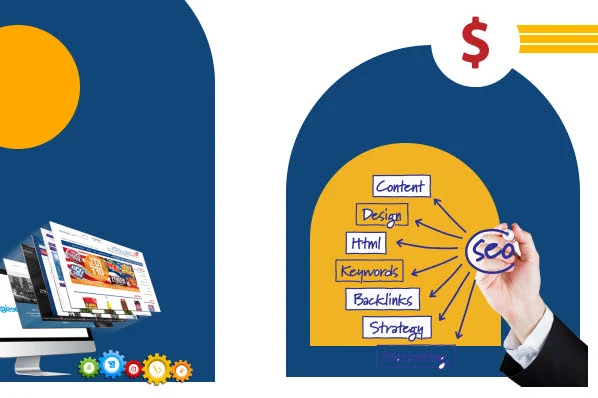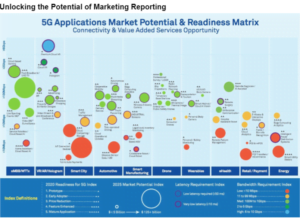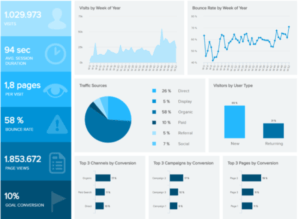When you harness the power of surfacing, organizing, analyzing, and effectively applying data, you hold the key to delighting an ever-expanding customer base and enhancing your business’s financial standing. However, the first crucial step is acquiring this invaluable information.

One of the most conventional methods for gathering data concerning the metrics most dear to your heart—metrics like churn rates, conversion rates, engagement metrics, user activation rates, and average revenue per customer—is through the meticulous process of data tracking.
What include Data Tracking:
- Embarking on Data Tracking
- Defining Data Tracking
- Significance of Data Tracking
- The Mechanism of Data Tracking
- Selecting Your Metrics
- Navigating Data Tracking Compliance
- Compliance with Data Tracking Policies and Laws
- Data Tracking Software
1.Embarking on Data Tracking
To unearth meaningful insights about your clientele and target audience, it is imperative to execute data tracking with precision and security. This article will explore the intricacies of data tracking, elucidate its benefits, expound on its mechanics, and introduce you to the tools that can simplify the tracking and analysis of the metrics pivotal to your operations.
2.Defining Data Tracking
Data tracking, at its core, entails the selection of specific metrics and events for tracking, followed by the systematic collection, organization, and analysis of the resulting data. Once this data has been scrutinized, its insights can be leveraged to enhance business performance and elevate the customer experience.
3.Significance of Data Tracking
Data tracking proves invaluable for businesses seeking to gain profound insights into user behaviors. It furnishes businesses with a window into the behaviors exhibited by customers on their web pages, landing pages, blog articles, and more. Armed with this information, businesses can deliver precisely targeted, personalized, and delightful experiences.
4.The Mechanism of Data Tracking
The process of data tracking and collection frequently relies on cookies and/or Javascript libraries. These tools facilitate the monitoring of user behaviors across various pages of your website, including web pages, landing pages, blog articles, product pages, and checkout pages, as well as user and customer accounts.
Numerous tools are at your disposal, some of which will be discussed shortly. These tools employ cookies and Javascript to meticulously track and analyze data.
For example, Google utilizes Javascript to gauge user interactions with your website, HubSpot employs cookies to oversee website traffic across landing pages, blogs, and web pages, and Segment utilizes both cookies and Javascript to analyze site traffic, deliver personalized advertisements, and enhance browsing experiences.
5.Selecting Your Metrics
The essence of data tracking lies in choosing the right metrics, i.e., what you intend to measure. Begin by asking questions about the insights you seek. For instance, consider the question: “Which version of my product page garners the highest user conversions?” This question can be translated into a metric: the conversion rate of a product page based on page views.
 Delve even deeper into your chosen metric by defining the “events” within that metric. For instance, in the case mentioned above, events could include: 1) a visitor landing on a product page, 2) a visitor clicking the Call to Action (CTA) on a product page, 3) a user completing a form or requesting contact with a representative on a product page, and 4) a visitor converting into a paying customer on a product page.
Delve even deeper into your chosen metric by defining the “events” within that metric. For instance, in the case mentioned above, events could include: 1) a visitor landing on a product page, 2) a visitor clicking the Call to Action (CTA) on a product page, 3) a user completing a form or requesting contact with a representative on a product page, and 4) a visitor converting into a paying customer on a product page.
These carefully chosen metrics and events should serve as the yardstick for evaluating whether a strategy resonates with your audience or not. In essence, your resulting data becomes the substantiation of your strategy’s impact on business and revenue.
6.Navigating Data Tracking Compliance
With a fundamental understanding of data tracking in place, considerations about General Data Protection Regulation (GDPR), privacy policies, and the legal safeguards in place for visitors, contacts, and customers come into focus.
7.Compliance with Data Tracking Policies and Laws
 In the contemporary business landscape, transparency regarding how businesses comply with these regulations is essential. Sharing information with customers and visitors about your adherence to these regulations is paramount.
In the contemporary business landscape, transparency regarding how businesses comply with these regulations is essential. Sharing information with customers and visitors about your adherence to these regulations is paramount.
8.Data Tracking Software
Did you know that operations teams spend a substantial 80% of their time dealing with data and process issues, leaving a mere 20% for driving strategic business initiatives and enhancing customer experiences?
The right tools can alleviate this burden, providing your team with the confidence that data is being tracked automatically, accurately, efficiently, and securely.
Data tracking presents an accurate and effective means of identifying and monitoring the most crucial metrics for your business. Armed with these insights, you can enhance the customer experience and bolster your bottom line with confidence.
Do you want to learn how to create and understand marketing reports? We have a guide “Mastering the Art of Marketing Reporting: A Guide to Informed Decision-Making”. Follow the link and get acquainted for free.
Mastering the Art of Marketing Reporting: A Guide to Informed Decision-Making
In our roles as marketers, we bear the weight of significant decisions on behalf of our company day in and day out. These choices demand our best judgment, but they also necessitate the incorporation of data and metrics whenever possible.
Undoubtedly, you’re already keeping a close watch on marketing metrics such as website traffic, lead generation, and customer acquisition. These metrics form integral parts of your marketing funnel and flywheel, painting a picture of your progress. However, they alone cannot provide the insights required to drive broader marketing decisions that affect your entire organization.
This is where the power of marketing reporting comes into the equation. This guide serves as your compass in the vast sea of marketing reports, helping you delve deeper into the realm of data analysis to enable truly informed decision-making.
Steps of Guide:
- Unlocking the Potential of Marketing Reporting
- Crafting a Compelling Marketing Report
- Examples of Marketing Reporting
1.Unlocking the Potential of Marketing Reporting

Marketing reporting is the art of gathering and dissecting marketing metrics to shape the trajectory of your future marketing endeavors, strategies, and overall performance. These reports unearth valuable, actionable data, enabling you to arrive at pivotal conclusions and align your efforts with the broader organizational goals.
The nature of marketing reports is diverse, contingent upon the data under scrutiny and the intended purpose. They can scrutinize the origins of your website traffic and leads, dissect audience interactions with your content, track conversion timelines, and ascertain the journey to becoming a customer.
2.Crafting a Compelling Marketing Report
As previously mentioned, there exists a multitude of marketing reports at your disposal. In this section, we won’t dwell on the specific data to include in your marketing report; that choice hinges on the type of report you opt for. Instead, our focus lies in the construction of marketing reports that empower your decision-making and cater to your audience, whether that be your team, CEO, or customers.
Most of your marketing reports will share certain common elements:
- Title: The title of your marketing report should unequivocally state the subject of analysis. Whether you’re scrutinizing campaign performance, quarterly blog metrics, or monthly lead generation, a clear title sets the tone. This becomes especially crucial when your report is meant for individuals beyond the marketing realm.
- Reporting Period: Every marketing report must be associated with a specific time frame. This period could span a few days, months, or even years. Analyzing data within defined timeframes allows for comparisons with past performance.
- Summary: The report’s summary encapsulates its essence, highlighting key takeaways, wins, losses, and goals for the subsequent reporting period. It acts as a quick reference, akin to the “Too Long; Didn’t Read” (TL;DR) section of your report.
With these foundational elements in place, let’s delve deeper into the two core aspects that make marketing reports truly effective: purpose and audience.
3.Examples of Marketing Reporting

With numerous reporting options at your disposal, it’s natural to wonder, “Where should I begin?” and “What are the fundamental marketing reports to acquaint myself with the data I’ve been diligently tracking?” To help you embark on your reporting journey, we’ve compiled five essential marketing reporting examples:
- Multi-Touch Revenue Marketing Report
For marketers, demonstrating their contribution to company growth is paramount. To avoid being underappreciated, it’s crucial to connect your marketing efforts directly to revenue. Multi-touch revenue attribution achieves precisely this by tracing closed revenue back to every marketing interaction, from initial website visits to final nurturing emails. This approach not only ensures that marketers receive due credit but also enables informed investment decisions, grounded in business value rather than vanity metrics. Additionally, multi-touch revenue attribution fosters alignment between marketing and sales teams.
- Channel-Specific Traffic Marketing Report
Understanding the sources of your website traffic empowers strategic decision-making. Identifying strong-performing channels allows you to allocate more resources to them, while underperforming channels can be optimized or supplemented. Source data serves as your compass in this endeavor, guiding your investments and ensuring efficient resource allocation.
- Blog Posts by Conversion Marketing Report
Blogs have emerged as a cornerstone of modern marketing. Tracking the number of leads generated by your blog on a daily, weekly, or monthly basis, broken down by channel, offers insights into the blog’s impact on lead generation. This report helps you identify the strongest channels for your blog and informs content promotion strategies.
- New Contacts by Persona Marketing Report
Creating buyer personas is a fundamental aspect of marketing, but it’s equally important to gauge their effectiveness. Tracking the number of new contacts added to your database based on each persona helps evaluate the accuracy of your personas and assess the success of your marketing efforts in targeting and engaging them.
- Lifecycle Stage Funnel Marketing Report
Segmenting your contact database based on lifecycle stages provides an overview of leads, subscribers, customers, and opportunities within a specific time frame. This data aids in determining whether you need to focus on lead generation or closing existing leads. Additionally, it offers insights into the overall quality of your contact database.
Incorporating these fundamental marketing reports into your reporting repertoire equips you with the tools to drive informed decisions, optimize strategies, and chart a successful marketing course.
In Conclusion
Marketing reporting is not a mere data-gathering exercise; it’s a strategic process that wields the power to shape the future of your marketing endeavors. By defining clear purposes for your reports and tailoring them to specific audiences, you can unlock the full potential of marketing reporting. Start with essential reports and gradually expand your reporting arsenal to become a data-driven marketing powerhouse.
Author
-

Alisha is the Editor-in-Chief of Search Engine Journal. Before that, she covered tech for News & Trends, content editing, and social strategy at AdClickAgency. Alisha holds a BA in English and Journalism from Mount Holyoke College and an MBA in Marketing from San Francisco State University. Her work has also appeared in Thrillist, the Boston Herald, and EcoSalon, and she's based in St. Petersburg, Florida.
View all posts







